2020
YEAR
TEAM
Director, Software Engineer
Senior, Software Engineer
Product Owner
UX Lead
UX/UI: Me
Automated Compliance Reporting
Trade Fund's (Disney) objective is to automate the creation of Home Entertainment Releases by tracking compliance for all accounts bound by Annual Deal Trade Fund contracts. Trade Craft currently tracks compliances for 12 retailers and reports marketing requirements across an average of 45 home entertainment releases per year.
As a UX/UI designer, I supported Trade Craft in discovery, design, and delivery and eventually transitioned into a permanent role for ongoing updates and support. Our team worked directly and received feedback from power users, business, and TC’s Director of Marketing. This case study will walk through the design decisions made, coupled with TC’s design principles, for defining an MVP.

DISCOVERY
I attended a kick off meeting which involved the team and 3 power users to discuss goals and requirements for the project. In this meeting, the users generously shared their existing needs, concerns, and frustrations with the current system. In order to better support my takeaways, I did extra homework by researching workflows in compliance reporting.
USERS
- How are reports currently generated?
-
- Once updates received by a manager, a manager will generate reports using powerpoint which consists of screenshots, image uploads, and excel data points. This report is sent out to stakeholders for confirmation.
-
- How are contracts currently created?
-
- Sales will work directly with vendors to created contracts for specific releases and title tiers.
- This is documented in an excel template. Example shows disorganization/clutterness.
- This contract is used as a guide for auditing and reporting.
-
- How do managers currently monitor report status for a given release?
-
- Audit vendors check on compliance item on site and update status using excel.
- Managers check reports periodically and prioritize urgency surrounding release dates by calling vendors
-
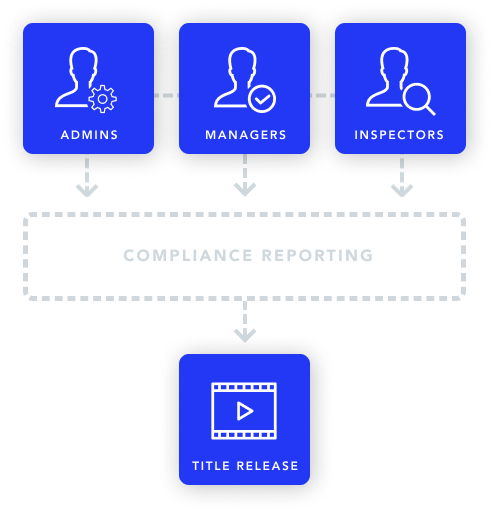
USER TASK FLOW
After understanding the roles of each user within compliance reporting, I created user task flows to communicate the flow of the process to our team and provide a general view of how the proposed interface should intend to work in its most efficient form. The diagram provides a step-by-step breakdown of what each user will see and do in order to complete the compliance reporting process.

MVP
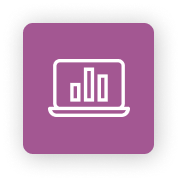
Real-Time reporting
Visual Dashboard that will report the overall status of any given release

Management
Automating reporting by centralizing data inputs across 3 teams (Trade Spend, sales, and audit vendors
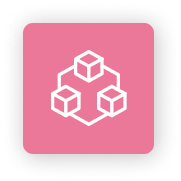
Business Info Centralization
Allowing Trade Craft to manage audit compliance in real-time—obtain updates that include evidentiary assets in order to show status.
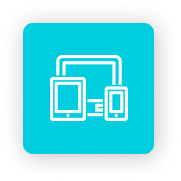
Mobility
Enabling vendors to upload and monitor the commitment information on a laptop or a mobile device.
NON-FUNCTIONAL REQUIREMENTS
One of my goals for discovery involves understanding Trade Crafts’s requirements and constraints early on. This allowed me to prioritize my design roadmap while still grounding my focus too user needs. Here are a few takeaways:
- Authentication users with TC ID
- User source systems: API’s for Title, Tier, and Release Dates
- Use of Trade Craft's approved stack of technology and infrastructure teams
- Front-end built using React
- Responsive requirements for web and mobile
- Push notifications requirements
- Native camera functionality for uploads
- 24x7 Dashboard capability’s for real-time updates and reports on-demand
- UI ability to export and print digital reports
DESIGN
I iterated aggressively until our team felt it had perfectly accomplished our goals—facilitating urgency, ease of use, and mobility in a centralized platform. Iterations were powered by feedback from our end users and stakeholders.
DESIGN AS IMPERFECTION
I started ideating concepts with some sketches. While I am by no means the best at sketching, I feel this is the quickest way to get feedback on your ideas. Once approved, I then converted the sketches too lo-fi wireframes. These designs were meant to be imperfect and only to focus on user experience and layout. Overall, this became an interactive process until my clients were happy. Below, you will find a few examples.
SKETCHES
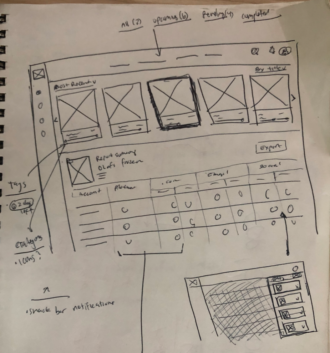
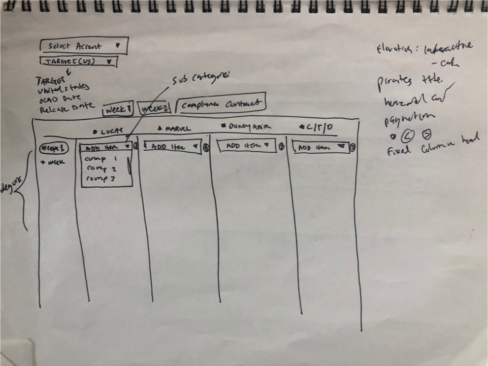
WIREFRAMES
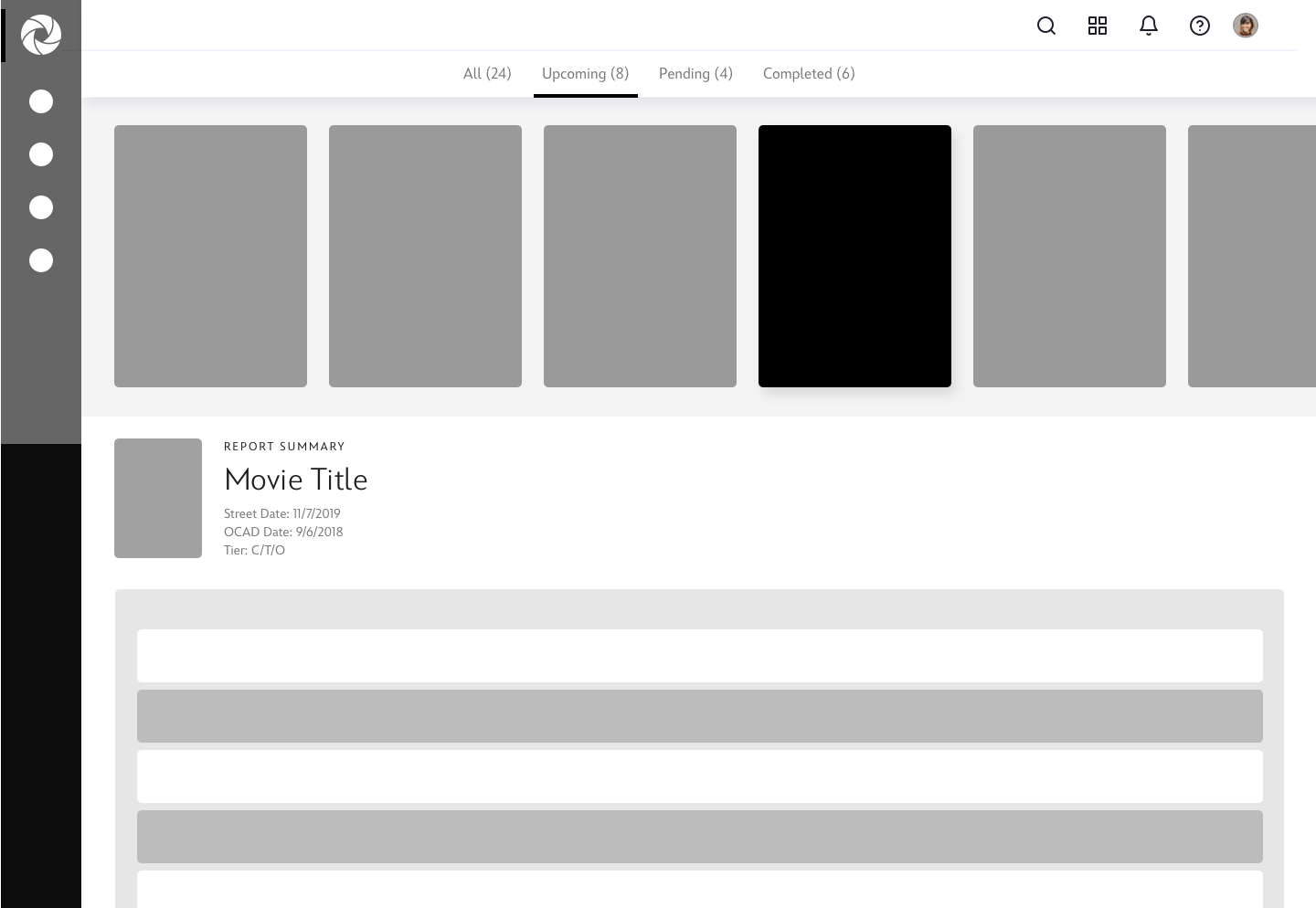
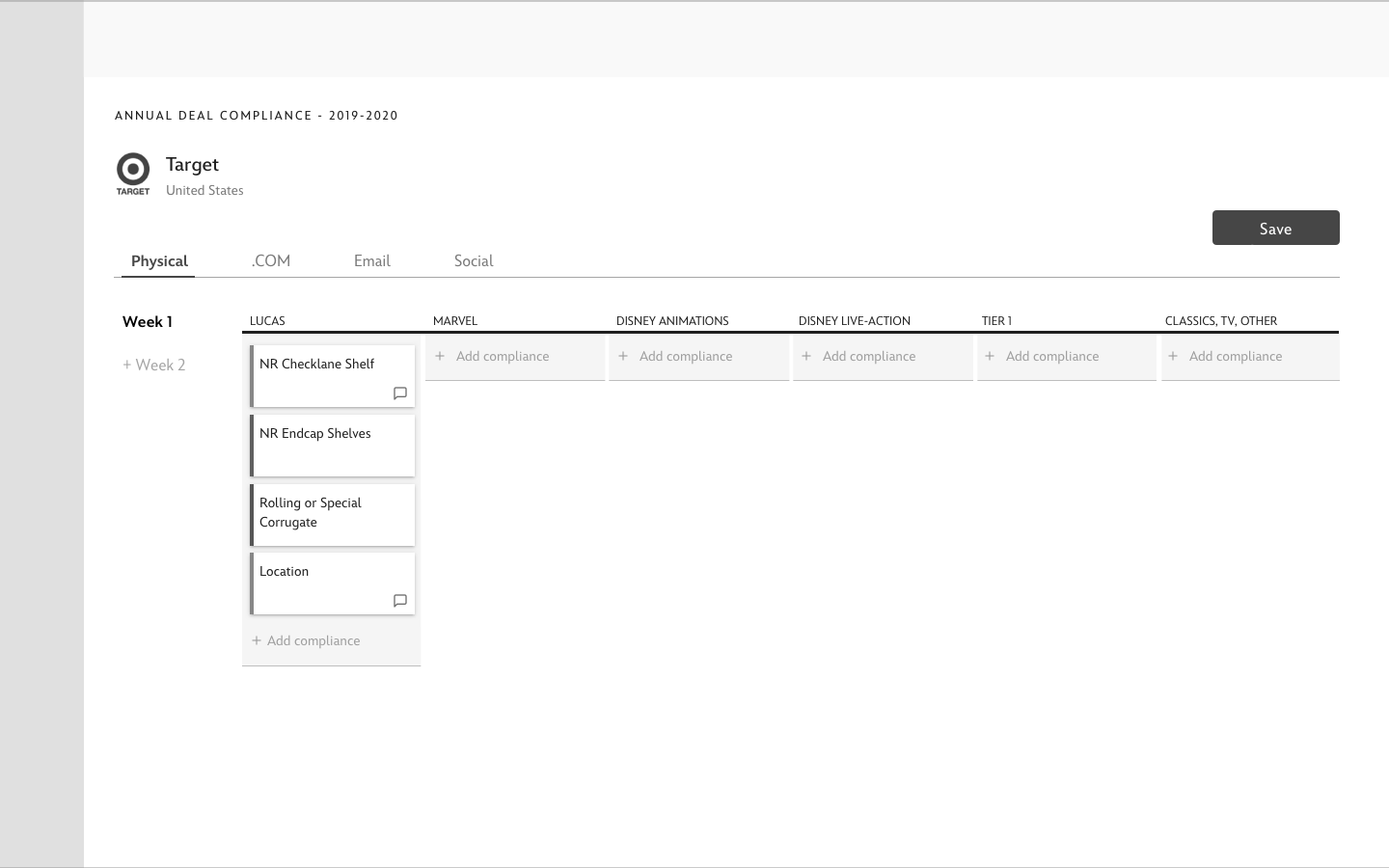
PROTOTYPE
Once all wireframed screens were approved by my users and clients, I converted them into mockups. Using material design as my framework, I worked with the client to further define additional branding elements for the design system.
DASHBOARD
My intentions were to centralize the workspace for users. users are able to select from multiple titles, review report summary, and make necessary adjustments without ever leaving the space.

1. TITLE SELECTOR
Designing the title cards focuses on urgency and high-level overview. This includes progress bars and countdown chips to emphasize time sensitivity. Because users primarily focus their attention on upcoming releases, I chose to utilize the carousel component which displays in sequence of importance.
2. REPORT SUMMARY
With over 12 accounts 8 categories to monitor, our team decided to simplify the process by using colored circles to represent status of an item (ie: red: needs work, green: complete). For managers, this helped reduce the time in identifying business-critical items at a glance.
MORE DASHBOARD SCREENS
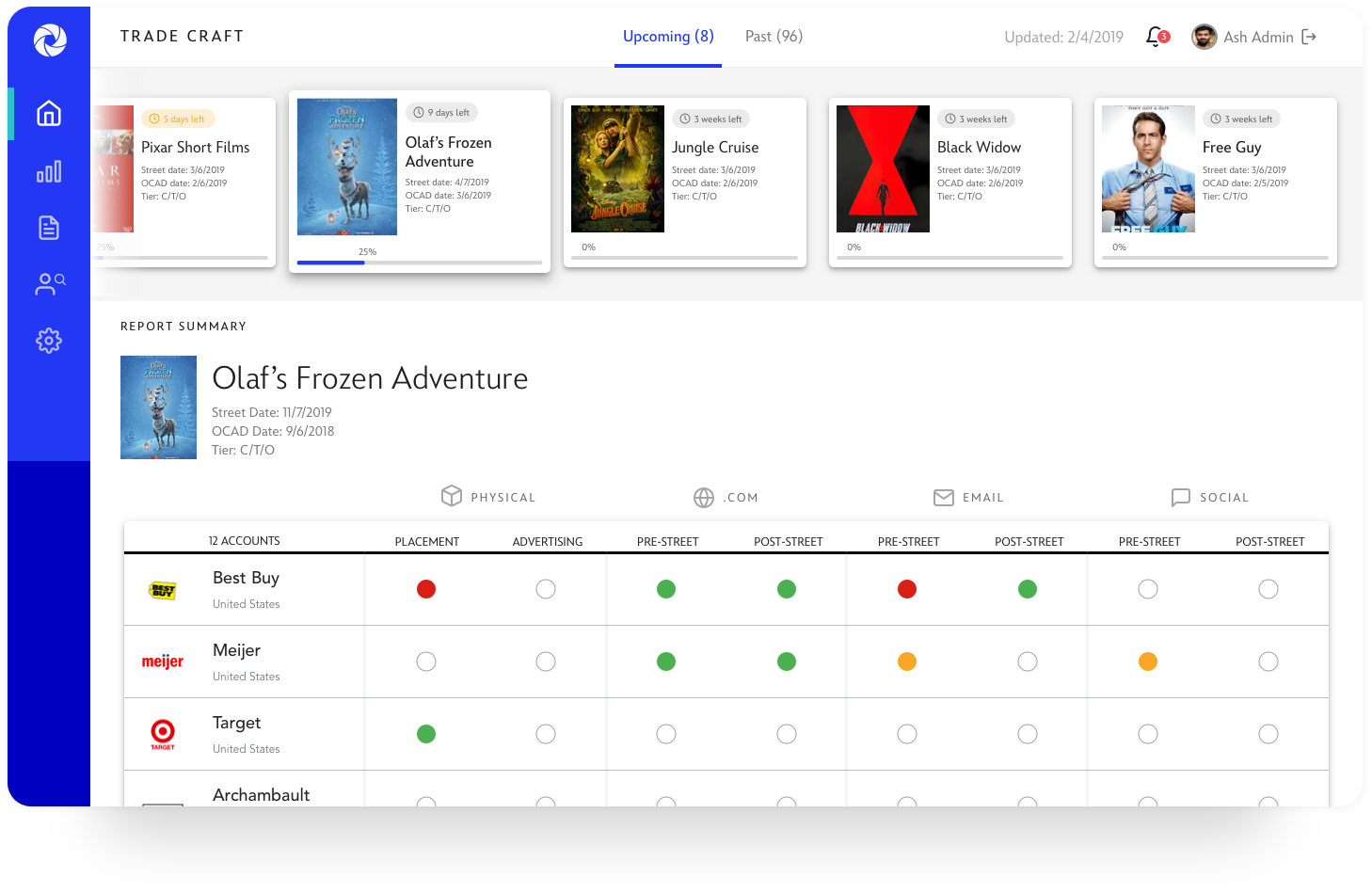
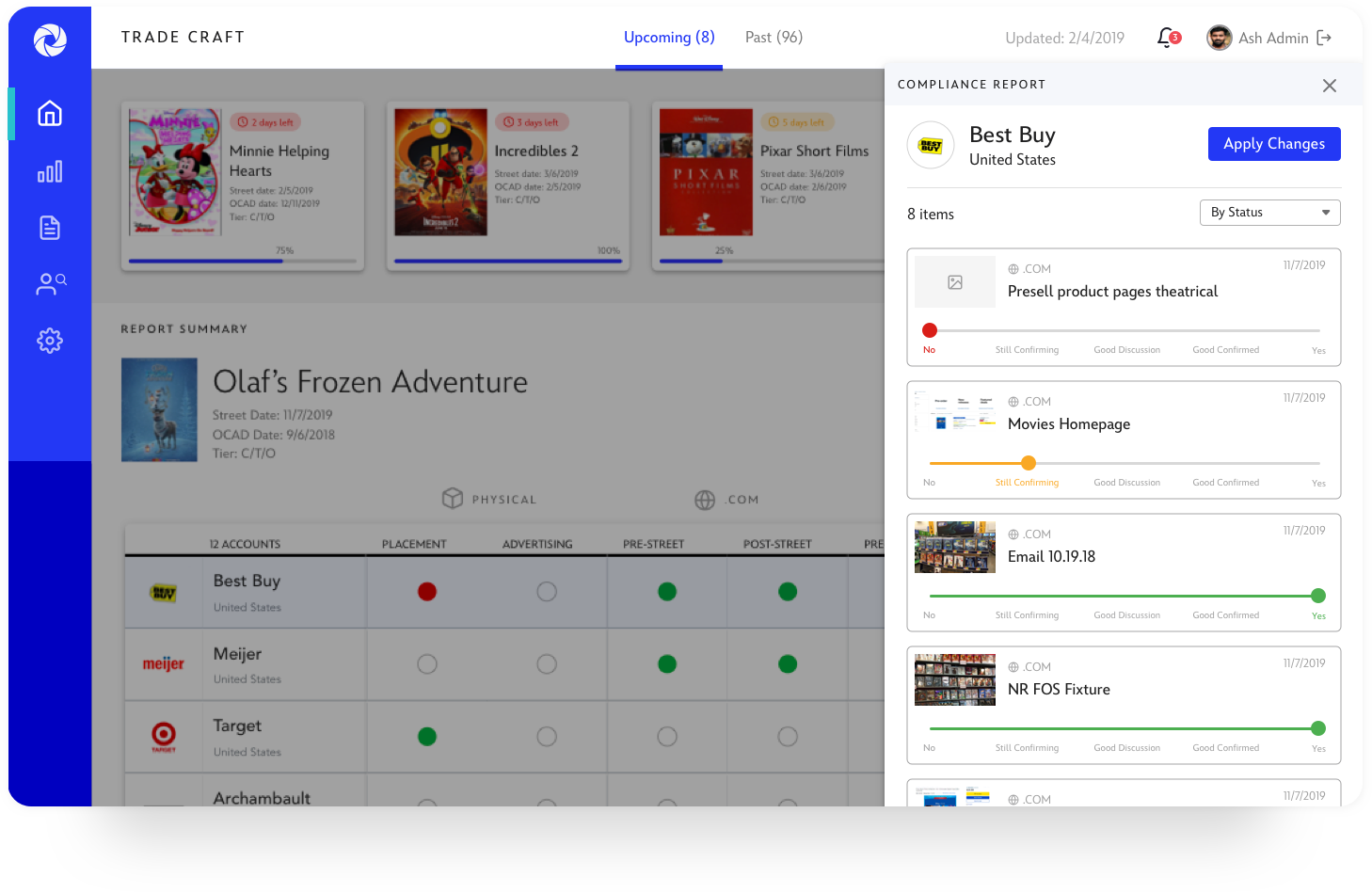
INSPECTOR (AUDIT VENDORS)
The goal for an inspector is to simply inspect whether an item meets its compliance requirements, taking a photo for proof, and to update that into the system for review. My user would like this process to be quick and easy for it has apparently been the bottleneck in the current system. We achieved this by expanding the app to mobile capabilities, allowing users to receive push notifications, and make necessary updates for urgent projects.
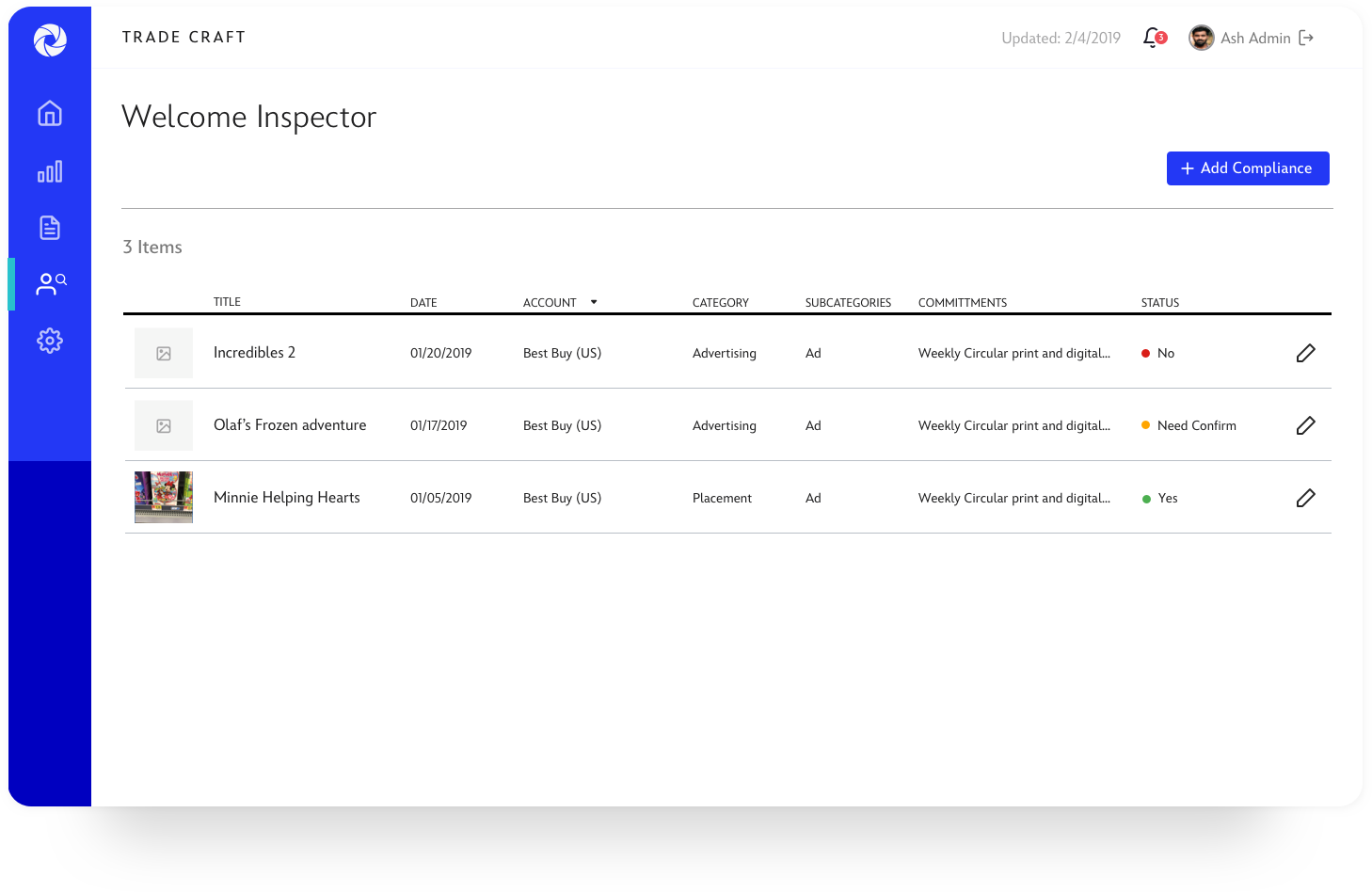
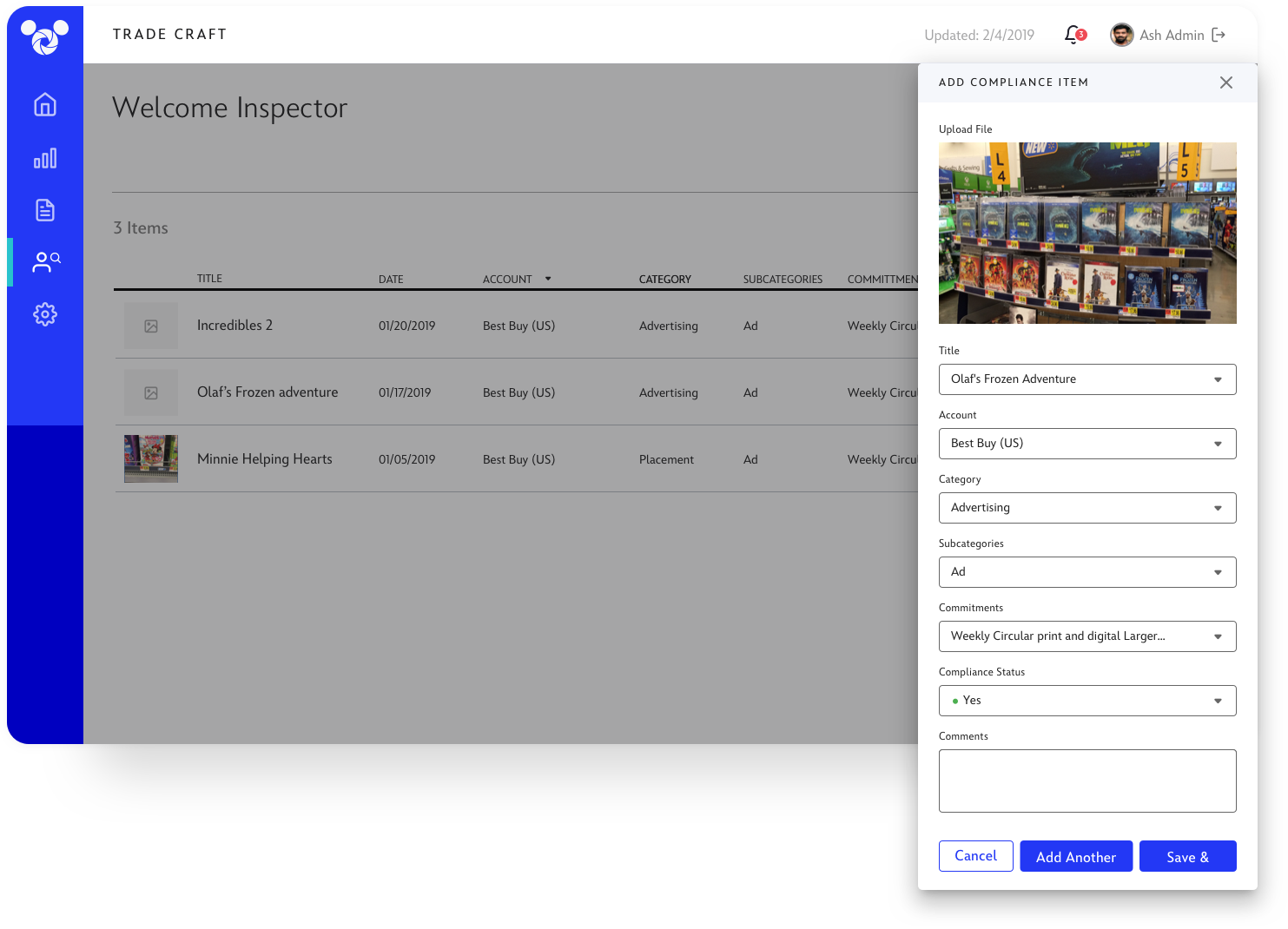
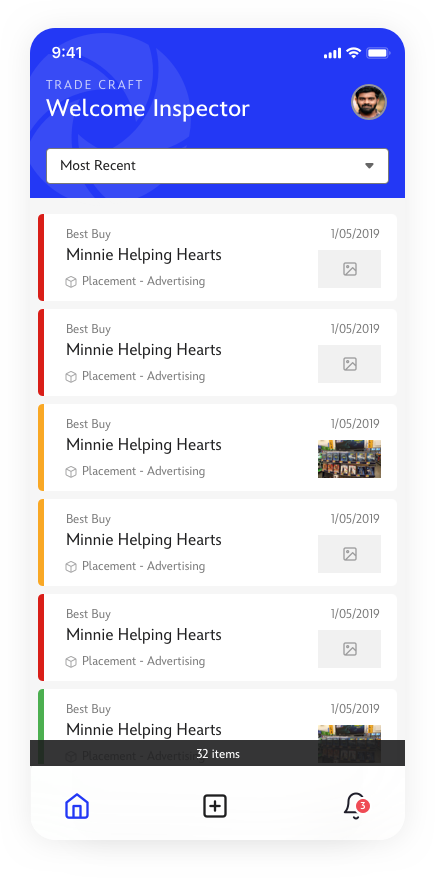
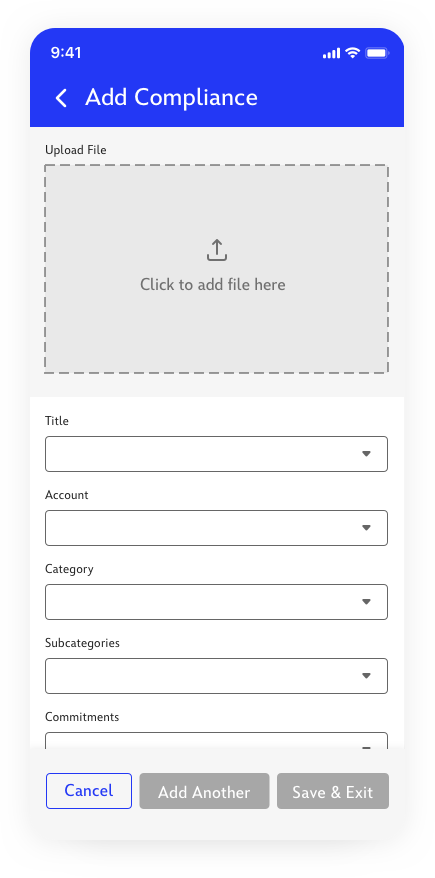
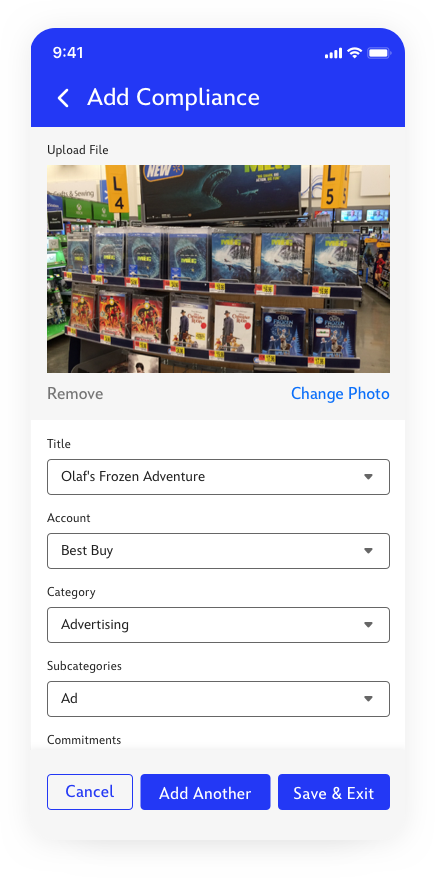
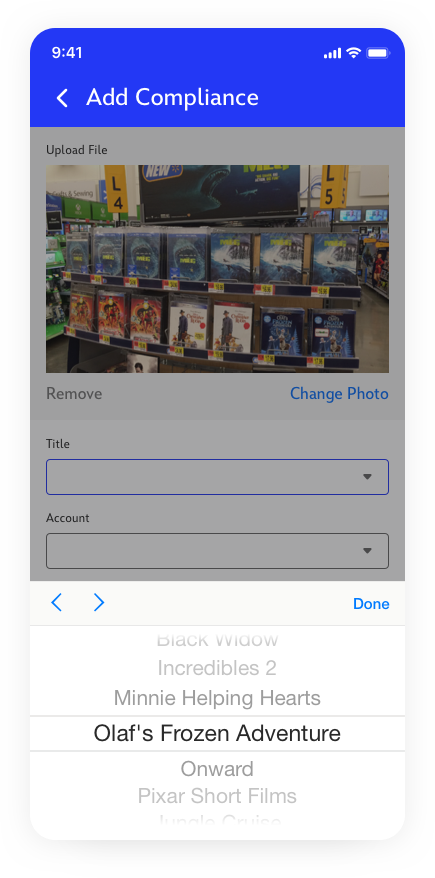
CONTRACTS & RELEASES
Creating and managing a contract can be timely when required for every new release on over 12 different accounts and multiple categories. These tasks were accomplished using excel and reformatted into PDFs (Example shown below). This introduced an opportunity for me to explore a modern take on the project management tool. This “out-of-box” solution allowed the possibilities of so many beneficial features that it was very well received by businesses and users.
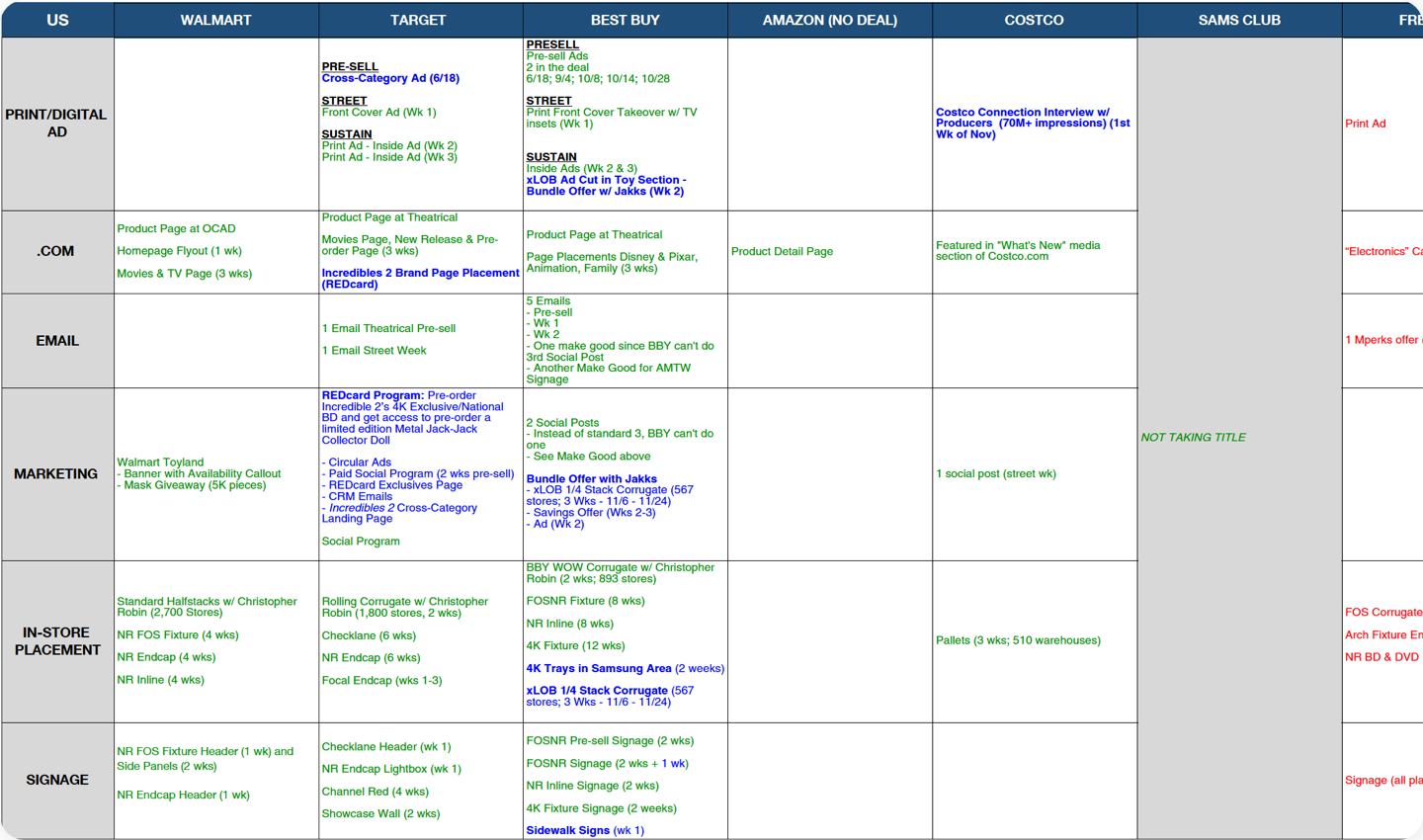

COMPLIANCE CARDS
Items can be duplicated, moved, and dragged into individual title tiers. This feature improves the user’s workflow and efficiency when delegating repetitive compliance items.
SCHEDULING
After talking with users, I learned that planning a contract is very much like creating a schedule. This introduced the idea which allows admins to schedule compliances across multiple weeks in the same workspace. Simply add the number of weeks in the left sidebar and personalize each week's compliance roadmap.
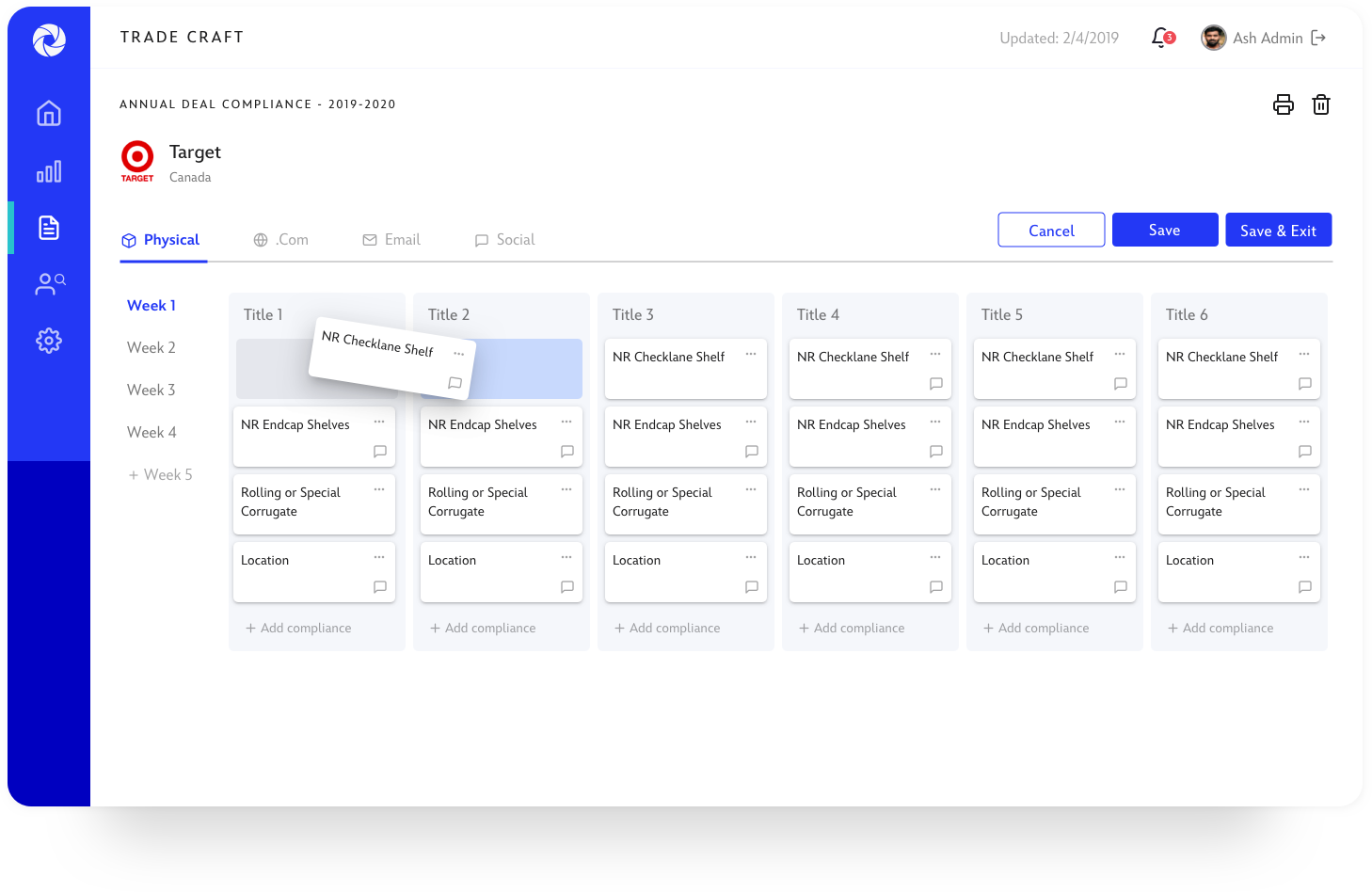
MORE CONTRACT & RELEASE SCREENS
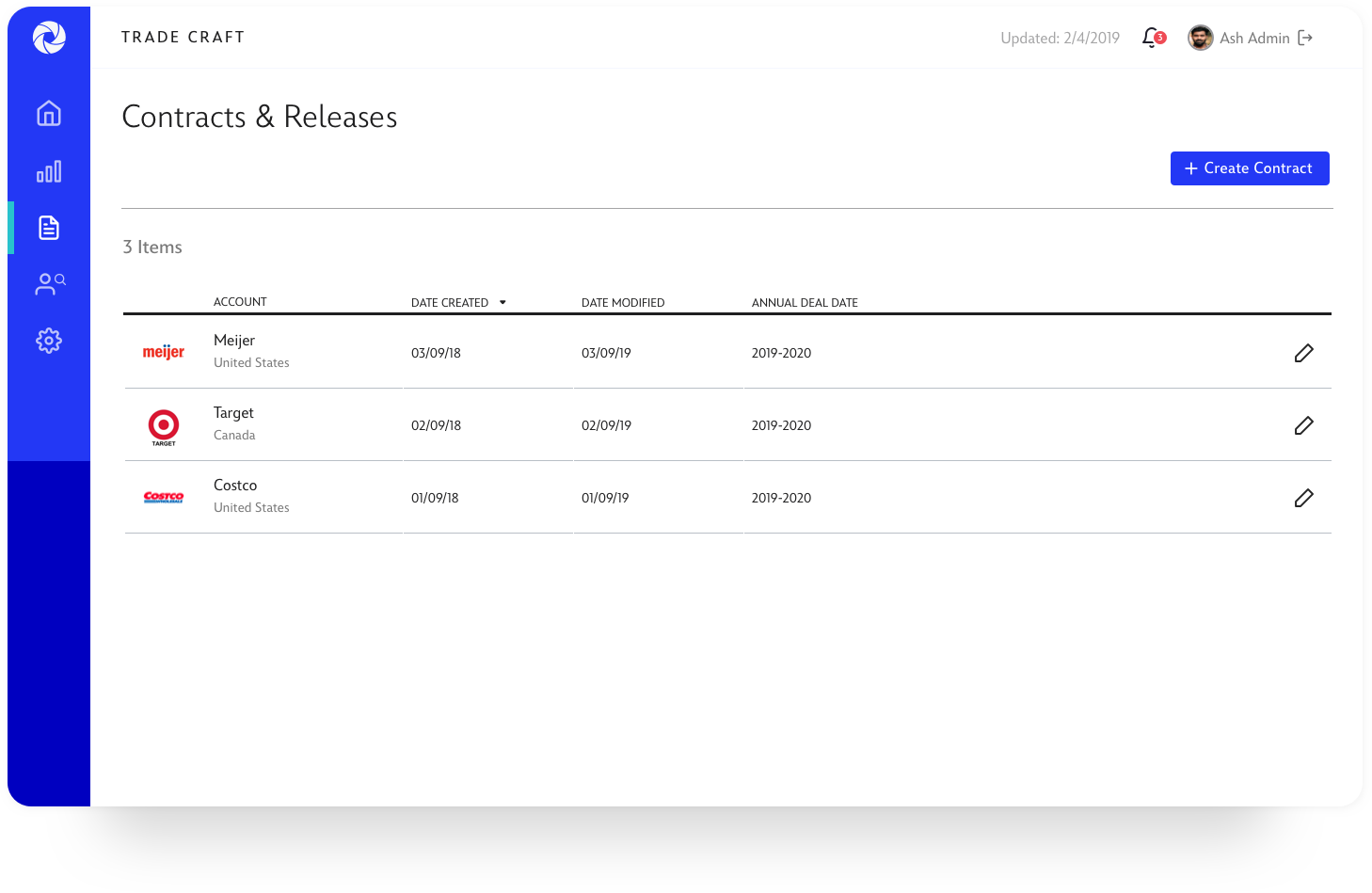
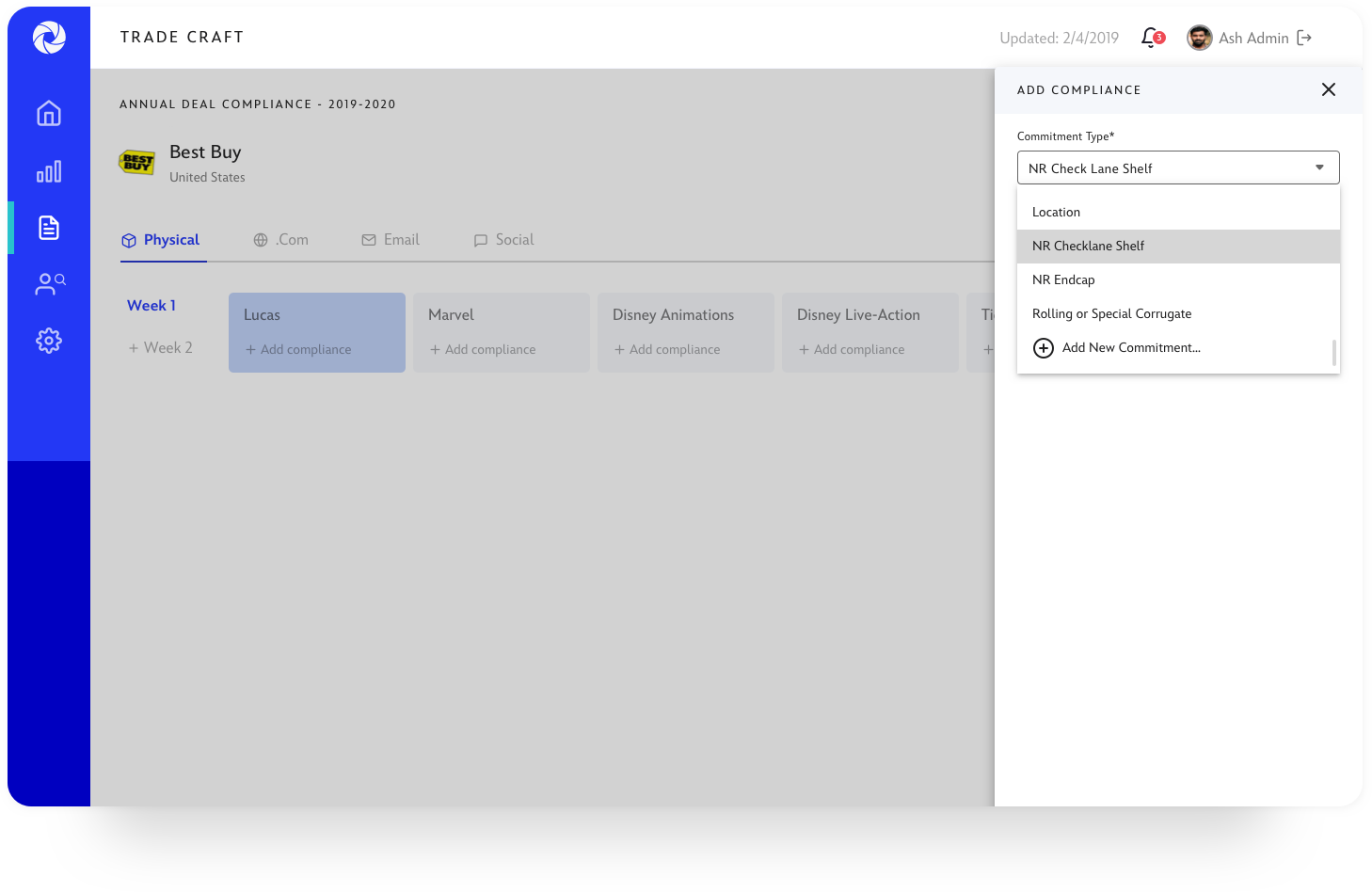
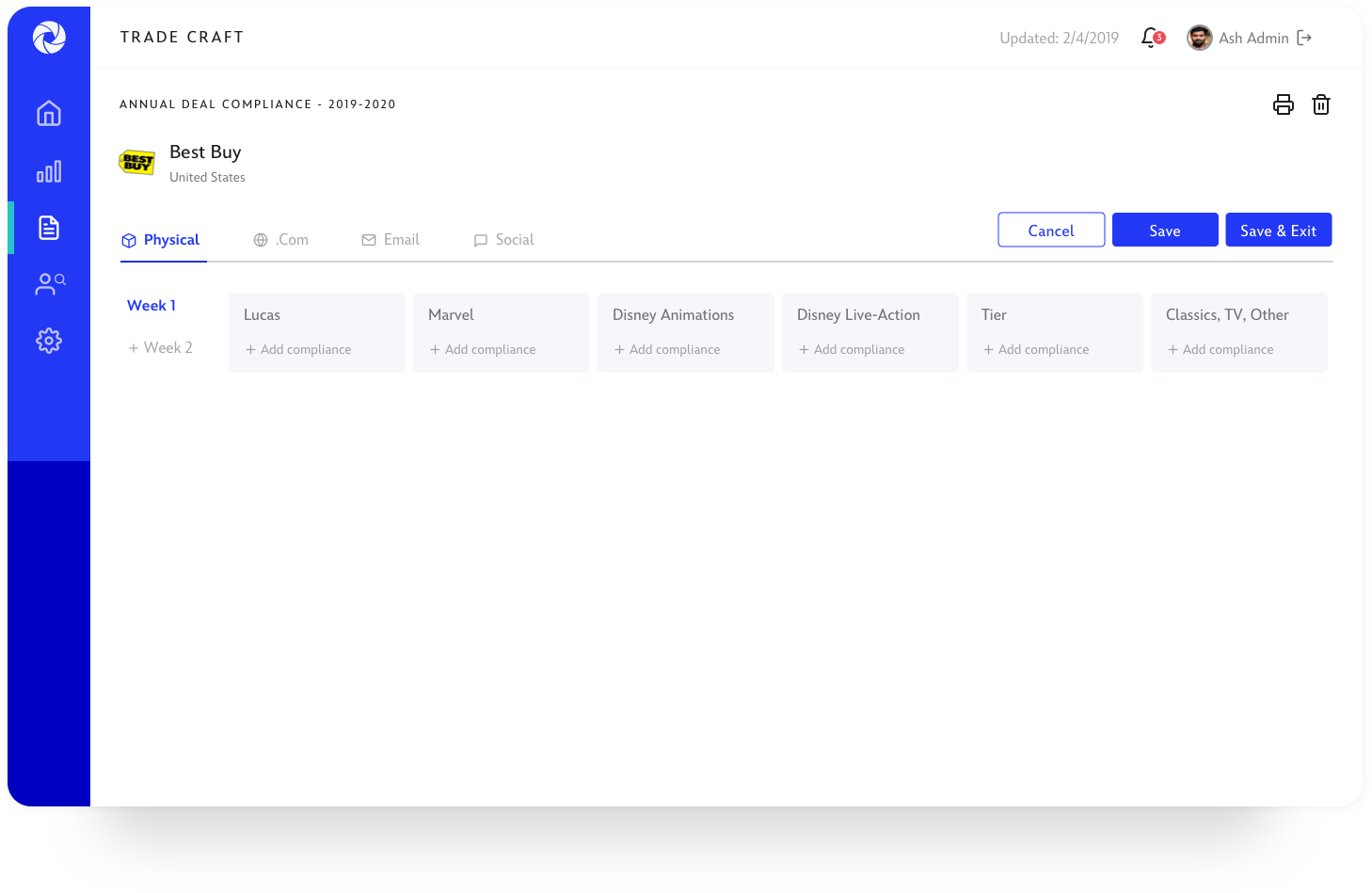
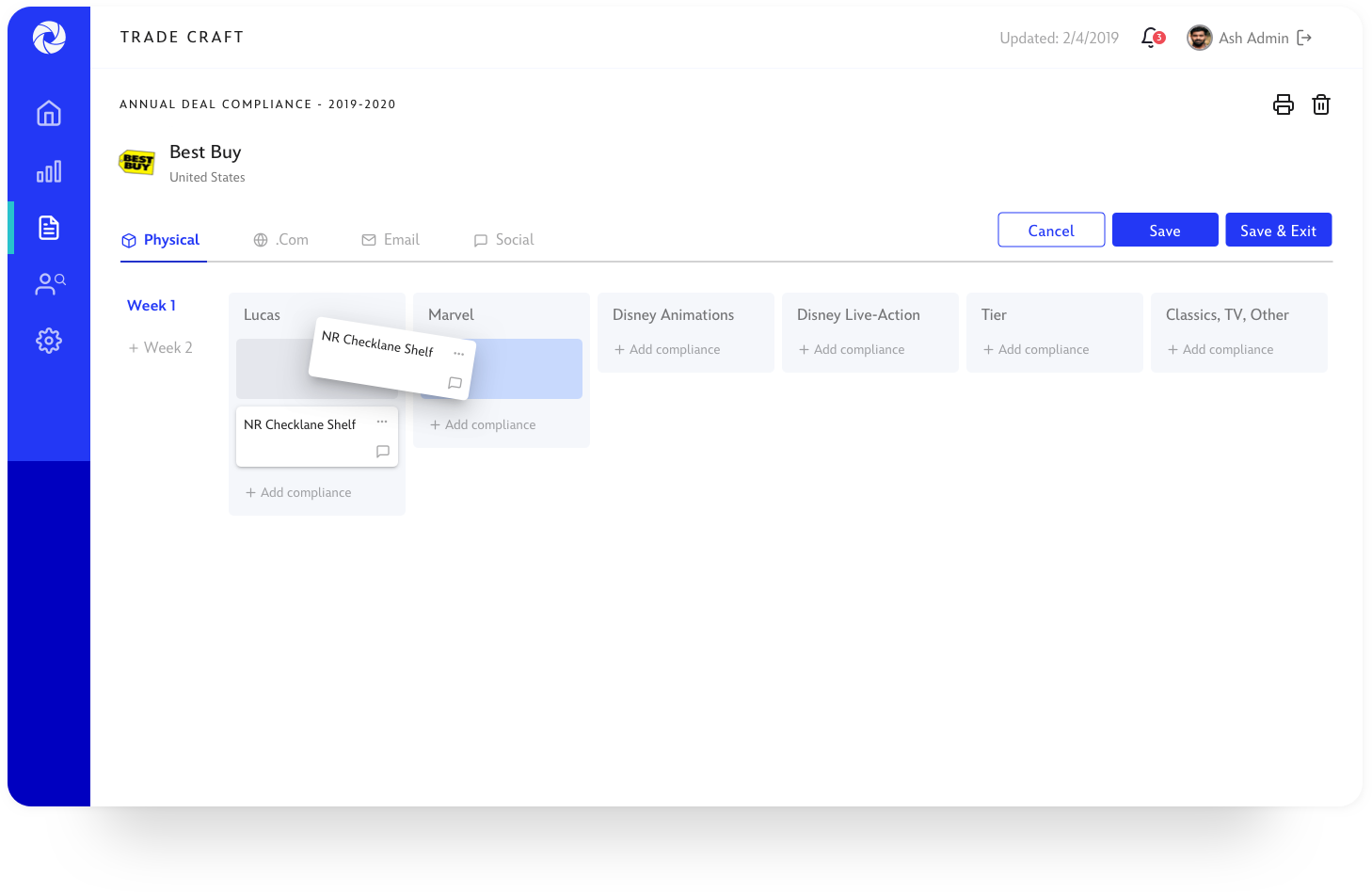
USABILITY TEST OBJECTIVES
Key takeaways:
- Real-time reporting
- Reduce compliance report complete time from 6-8 hours per release to under 30 minutes
- Management
- Increase consistency, reduce errors and improve report viewing ability for stakeholders
- Users can easily detect areas of urgency with status icons
- Business information centralization
- Sales reps will be able to find out in real-time when marketing campaigns are not meeting expectations and perform tasks before release deadlines.
- Mobility
- Enabling users to upload and monitor the commitment information on their phones significantly reduces upload time and increases live report updates.

Things I've learned from Trade Craft:
1. To prioritize experience over features
-
- For an enterprise product powered by both end-users and internal stakeholders, feature scope becomes a dominant force which may sway design, development, and business decisions. I learnt this balance—while being grounded by our power users’ needs.
2. Learning to coexist with high-level engineers
-
- My experience with engineers continues to grow as we work together to define the source of truth, especially with tight deadlines. Trade fund has provided me with complex requirements which have allowed me to proactively communicate with the engineers so that I can simplify it for our users.
3. Never stop pushing the boundaries!
-
-
Even reputed, established organizations are open to change if it brings value. While considering what I can or cannot design due to constraints, it was important to provide alternative options to introduce new ideas and solutions without the fear of being shut down.
-



